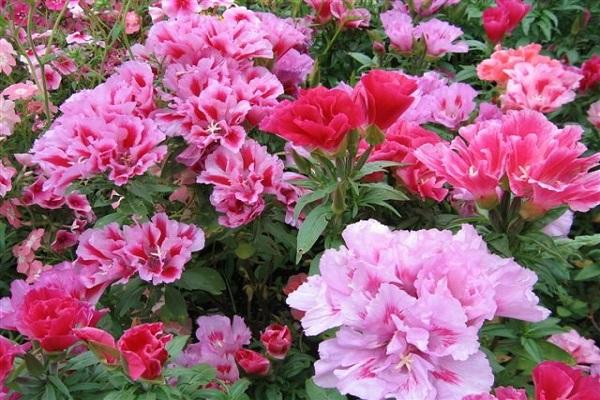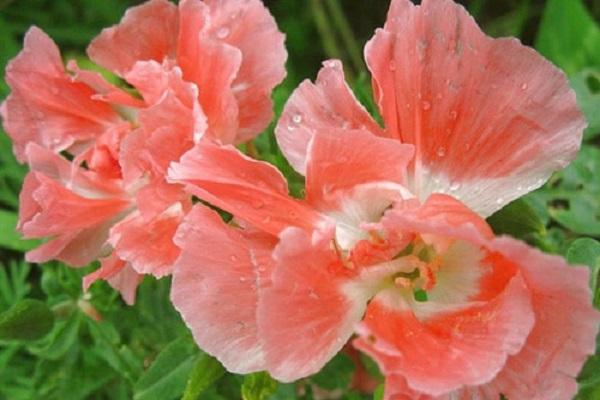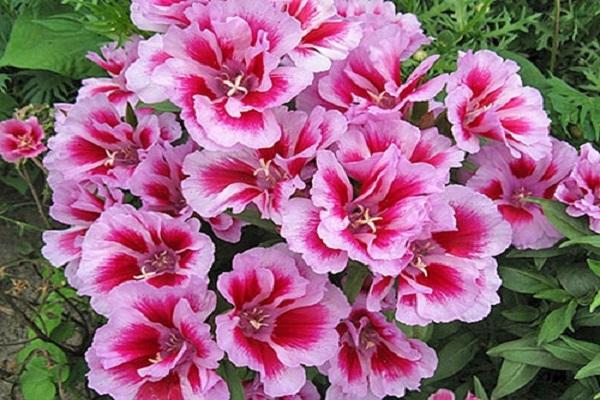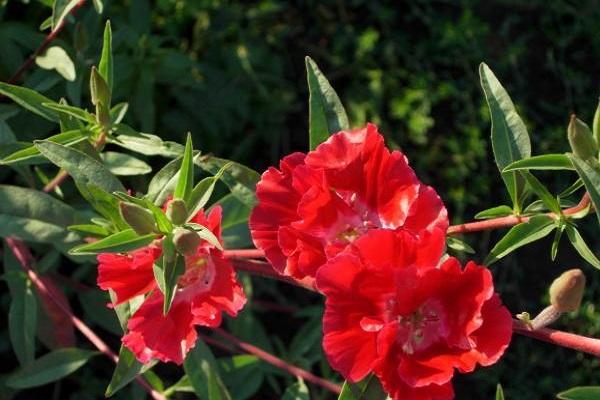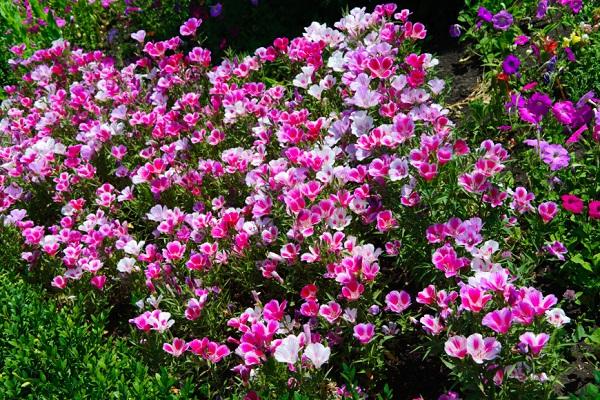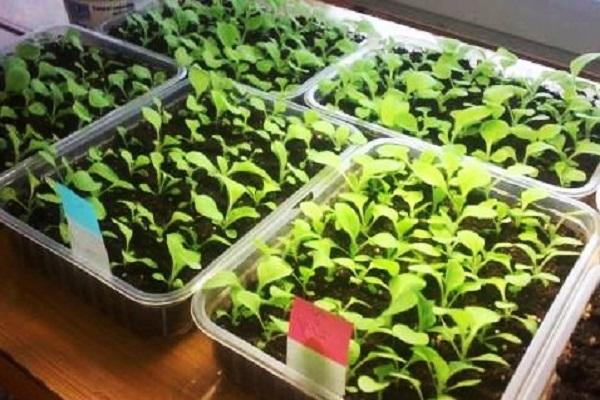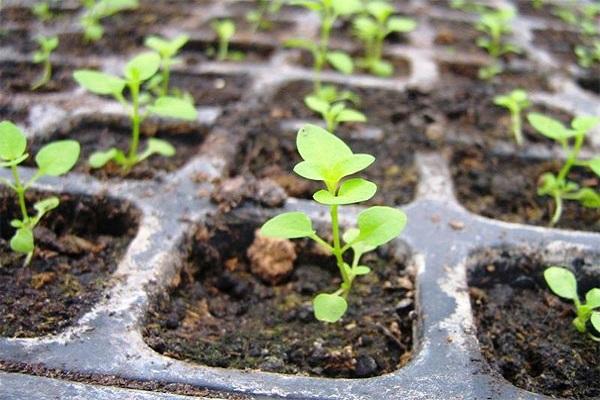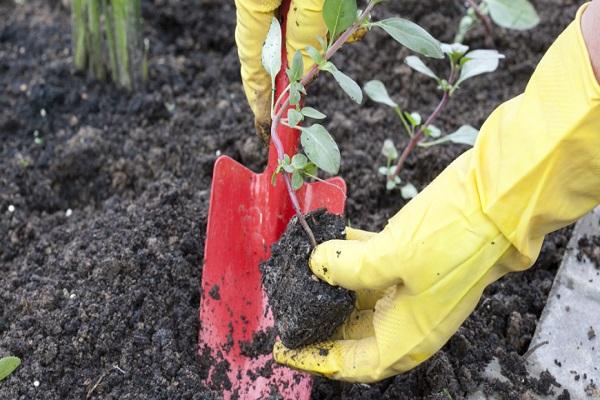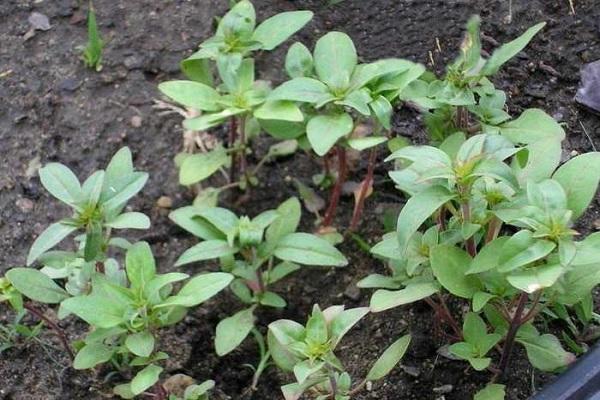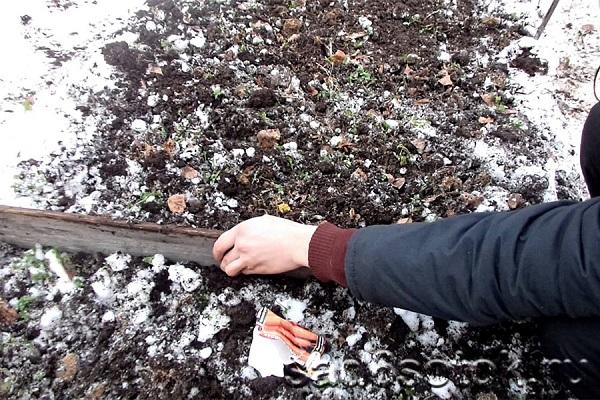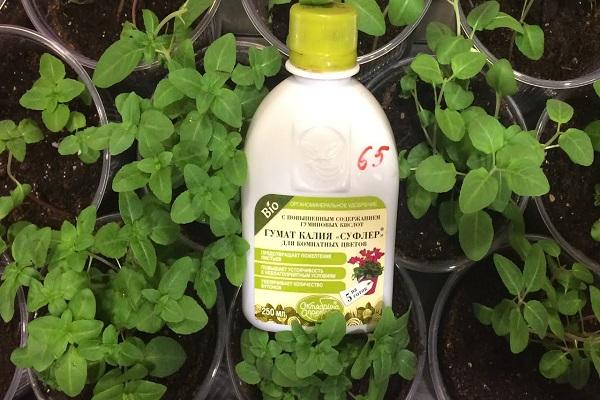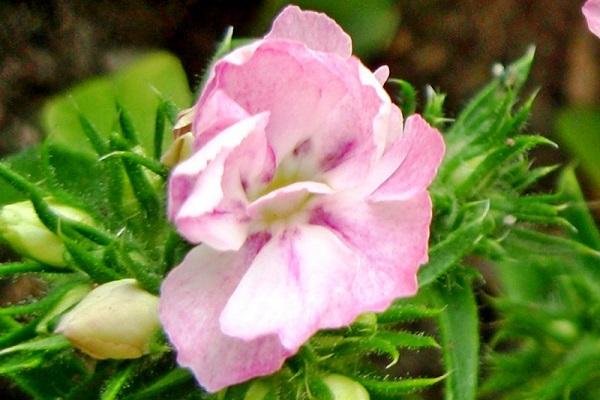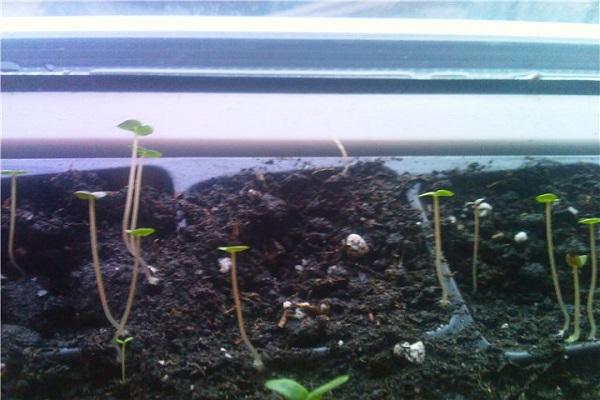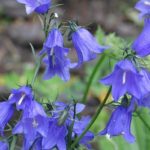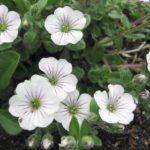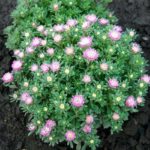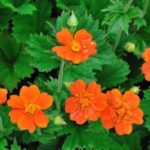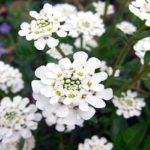Beginning gardeners are interested in knowing how godetia is planted and cared for. This luxurious and graceful plant, which is often called the flower of passion, will decorate a flower bed, alpine hill or border. At first glance, godetia impresses with its expressive, bright colors, ranging from delicate pink to deep burgundy. The flowering period lasts until the first frost.
- Description and features
- Kinds
- Large-flowered
- Lovely
- Terry
- Azaleaceae
- Popular varieties
- Weiser Ostrich
- Orange Room
- Crystal snowflake
- Kirshkenigin
- Bride
- Rembrandt
- Sybil Sherwood
- Blitzstral
- Monarch
- Red wine
- Meteor
- Butterfly
- Cinderella
- York
- Summer paradise
- Summer beauty
- Katerina
- Growing seedlings
- Deadlines
- Soil preparation
- How to plant
- Temperature and light conditions
- Watering
- Dive
- Hardening
- Planting in open ground
- When to plant
- Selecting a location
- Soil requirement
- Planting scheme
- Features of winter sowing
- Care
- Watering
- Loosening and weeding
- Top dressing
- Removing dried flowers and leaves
- Diseases and pests
- Root rot
- Downy mildew
- Leaf-eating pests
- Aphid
- After flowering
- Collection and storage of seeds
- What to do if seedlings stretch out
- Use in landscape design
- Reviews
Description and features
Godetia is not a perennial, it is an annual garden plant belonging to the fireweed family. Erect and branched stems form bushes reaching 20-60 centimeters in height. Depending on the subspecies, they are spreading or pyramidal.
The shape of the flowers resembles cups and bells; their surface is terry or silky. Godetia leaves are lanceolate and entire. The colors are varied - there are white, pink, soft orange, peach, lilac, purple and burgundy tones. The flowers are collected in racemose inflorescences from three to ten centimeters in diameter.
The flowering period begins in July and ends at the end of October. Godetia was discovered and studied by the famous Swiss botanist C. H. Godet, after whom it was named. This flower is native to Southern California.
Kinds
There are several known species of godetia, differing in color, shape and size of flowers, flowering periods and cultivation characteristics.
Large-flowered
As the name implies, this species is characterized by the largest flower size - up to 10 centimeters in diameter. The bush reaches an average height of approximately 20-40 centimeters.The erect stems have a fragile structure before the growing season and then become lignified. The shape of the flowers is cup-shaped or bell-shaped. They remain on the bush from July to October.
Lovely
The Lovely Godetia has taller stems, up to 60 centimeters. The diameter of the flower is about 6 centimeters. The surface of the petals is soft satin. The color, depending on the variety, is white or bright pink. The leaves are lanceolate with pointed tips. Godetia Charming blooms for three months - from July to September.
Terry
Terry godetia is a hybrid variety bred on the basis of large-leaved godetia. It is impossible to find it in the wild; it is exclusively a garden decoration. The petals of such a flower can have a semi-double, double or densely double surface. This makes them look great in bouquets.
Azaleaceae
This variety received its characteristic name due to its external resemblance to azalea. It is characterized by neat compact dimensions and a height not exceeding 40 centimeters. Distinctive features are branched stems and abundant dense flowering.
Among all existing varieties, azalea-flowered godetia is the most unpretentious, able to withstand frost.
Popular varieties
Among the variety of varieties, the gardener will be able to choose the appropriate option.
Weiser Ostrich
Weiser Ostrich is one of the most popular large-flowered varieties, reaching a height of 40 centimeters. A distinctive feature is the expressive snow-white flowers with a wavy edge. This sun-loving variety should be planted in areas with good natural light. At the same time, it easily tolerates cold weather, which means it can be grown in northern regions.
Orange Room
The Godetia bush Orange Room is approximately 50 centimeters in height. The small flowers are painted in a rich red color with an orange tint.
Crystal snowflake
Crystal Snowflake is characterized by a tall stem dotted with large snow-white flowers. This is one of the most elegant varieties of godetia.
Kirshkenigin
Characteristic features of this variety are tall stems and luxurious large pinkish-red flowers.
Bride
Another variety of godetia, decorated with delicate snow-white flowers with a barely noticeable pink tint.
Rembrandt
Rembrandt is a variety of godetia, characterized by hemispherical low bushes up to 35 centimeters. The shoots have a pinkish-green tint. They have lanceolate-shaped leaves. The pink flowers have a wavy shape and a dark red spot in the middle.
Sybil Sherwood
Godetia Sybil Sherwood is compact in size and short in height. The bush is decorated with lanceolate leaves and semi-double salmon-pink flowers. From the middle to the edges the flowers have a lighter shade.
Blitzstral
Blitzstral is a medium-sized godetia bush with large cupped flowers of a rich fiery red color. Thanks to long flowering and low maintenance, it is an excellent choice for beginning gardeners. Tolerates low temperatures well.
Monarch
Godetia Monarch is a very neat bush of compact size. The flowers have a graceful bell shape. The colors are very varied - white, soft pink, rich pink or crimson. At the very base of the flower there is an expressive carmine spot. This variety can be grown not only in the garden, but also at home - for example, on a balcony or windowsill.Another important advantage of this variety is its ability to withstand frost.
Red wine
Red wine is another low-growing Godetia variety with frost-resistant properties. Rich green foliage combined with scarlet-red double flowers looks very impressive. This variety can be grown in open ground or containers.
Meteor
The Meteor variety is characterized by thin, erect shoots with light fluff. Compact size bushes. The flowers are cup-shaped and reach a diameter of 8 centimeters. They have an attractive terry surface and a variety of colors - soft pink, purple or deep red.
Butterfly
The Moth variety is distinguished by its small bush height. Lush double flowers resemble butterfly wings due to their wavy edges and bright colors.
Cinderella
Among all varieties of godetia, Cinderella stands out for its luxurious pink and salmon flowers with a pearlescent tint. The height of the bushes reaches 60 centimeters.
York
The York variety is characterized by a small height - on average up to 40 centimeters. The bushes are lush and spreading. Flowers are cup-shaped, six centimeters in diameter. The entire petals are painted a rich red-purple color, with a white spot right at the base. The stems have a red-brown tint.
Summer paradise
Summer Paradise is a Godetia variety with beautiful pinkish-red flowers that have a wavy edge and a terry surface. The average height of the bush is 40-50 centimeters.
Summer beauty
Summer beauty is a large-flowered variety of godetia. The diameter of the inflorescence is 6 centimeters, and the height of the bush is 60. The shades of luxurious double flowers vary from pink to red.
Katerina
Another attractive large-flowered godetia variety is Katerina.Smooth and branched stems reach 60 cm in height. They are densely dotted with large silky flowers of various colors - white, pink, lilac, purple and carmine. Combined colors are also available. The flowering period lasts until mid-autumn.
Growing seedlings
To grow high-quality godetia seedlings, you need to comply with deadlines, soil requirements, temperature conditions and all care rules.
Deadlines
Seeds for seedlings need to be sown at the end of March or beginning of April, so that full-fledged bushes appear by May.
Soil preparation
Containers for future seedlings must be filled with loose, nutritious soil with good drainage properties.
How to plant
The process of planting godetia seeds is very simple. It is enough to mix them with clean river sand and distribute them evenly over the surface of the filled container. Then sprinkle a thin layer of soil on top. After this, you need to create a greenhouse effect by covering each container with plastic wrap.
Temperature and light conditions
The optimal temperature is from +15 °C to +18 °C. The room must be well lit for at least 12 hours a day, so artificial lighting may be required.
Watering
Seedlings need moderate watering. It is important to consider that excess moisture can lead to mold.
Dive
Ten days later, the first shoots appear. As soon as 2-3 full-fledged leaves are formed on the seedlings, they need to be picked. To do this, they must be carefully dug up, cleared of traces of soil and the roots shortened if they are too long. Then plant three seedlings in each separate pot.
Hardening
At the beginning of May, you need to start hardening off the plants so that they adapt to the sun and wind.To do this, you should take them out into the fresh air every day. At the very beginning, it is enough for 2-3 hours, and then for the whole day. When warm spring weather sets in, you can keep the seedlings outdoors all night.
Planting in open ground
When planting godetia in open ground, you need to choose the right place and prepare the soil.
When to plant
Seedlings should be planted in open ground when they reach a height of approximately 5-7 cm - at the end of May or beginning of June.
Selecting a location
A dry and well-lit place with sunshine is suitable for planting godetia. The plant does not tolerate completely shaded areas, but grows successfully in light shade.
Soil requirement
The ideal soil for godetia is light loam with a neutral or slightly acidic reaction. Heavy or sandy soils are strictly contraindicated. You should also avoid excess moisture in the soil.
Planting scheme
Seedlings should be transplanted into open ground early in the morning before sunrise or in the evening after sunset. To avoid damaging the roots, the plants must be very carefully removed from the containers along with the earthen ball.
The holes for godetia should be located at a distance of 20-25 cm. For tall varieties, this can be slightly increased.
Features of winter sowing
Sowing godetia before winter is practiced exclusively in regions with a mild winter climate. The most suitable time for this is the end of October or the beginning of November, when the top layer of soil is sufficiently frozen.
In this case, you need to sow the seeds in the ground, and then mulch with peat (its layer should be 7-10 cm). With the onset of spring, the mulch must be removed, the plantings watered and covered with non-woven fabric. In May, the seedlings need to be thinned out or transplanted to permanent locations.
Care
Caring for the unpretentious godetia is not difficult, so even novice gardeners can easily cope.
Watering
Moderate watering is a guarantee of good growth and well-being of godetia. When the soil dries out, flowering becomes more sparse, so on dry days you need to water the flower more intensively (3-5 times a week). Excessive waterlogging of the soil also has an adverse effect on flowering and can also lead to rotting. In autumn, the amount of watering should be reduced.
Loosening and weeding
To speed up growth and protect against weeds, you need to regularly loosen and weed the soil around the godetia.
Top dressing
During the budding period of the plant, mineral fertilizers with a minimum nitrogen content are required. It is recommended to fertilize no more than once a month, since oversaturation with minerals can negatively affect flowering.
Removing dried flowers and leaves
To stimulate the formation of new buds and extend the flowering period, it is necessary to promptly remove faded inflorescences and damaged stems.
Diseases and pests
In general, godetia is resistant to diseases and pests. However, in some cases problems arise, so it is important to know the signs and solutions.
Root rot
Root rot is a consequence of severe waterlogging of the soil. Instances with damaged root systems must be uprooted and burned so that the putrefactive process does not spread to healthy plants.
Downy mildew
Peronosporosis belongs to fungal diseases and manifests itself in the form of spots on the stems and leaves of godetia. Timely treatment with fungicide solutions will help protect the flower from this phenomenon.
Leaf-eating pests
Leaf-chewing pests pose a threat in areas with an abundance of weeds. Therefore, they must be removed promptly.
Aphid
To destroy aphids, insecticides or a solution of laundry soap with the addition of ash are used.
After flowering
At the end of the flowering period, you need to carefully examine the godetia bushes, remove faded inflorescences and damaged leaves, and then begin collecting and storing seeds.
Collection and storage of seeds
After flowering ends, godetia seeds ripen a month later. This is evidenced by the darkening of the fruit boxes. They need to be carefully cut, dried and opened to easily shake out the seeds. They are securely stored in paper bags or small glass bottles until next spring.
What to do if seedlings stretch out
Pulling of seedlings is likely in case of too dense sowing or lack of sunlight. There are several ways to solve this problem:
- diving into separate containers;
- adding artificial lighting;
- reducing watering to a minimum.
A few days after picking, it is recommended to fertilize with a weakly concentrated complex fertilizer.
Use in landscape design
Depending on the variety, godetia can be used in different ways in landscape design.
Plants with tall stems look impressive in the center of a mixborder. Low-growing plants adorn the slopes of alpine hills and flower borders placed along garden paths or around lawns. Combine with petunias and peonies.
Reviews
Marianna: “I decided to make an alpine slide at my summer cottage. For this I chose godetia variety Monarch. Before frost sets in, I can admire white, pink and crimson flowers.”
Katya: “I already have all the varieties of godetia in my garden.I use them to decorate alpine slides, borders along paths, and frames around the gazebo. I really like that they bloom until autumn, without requiring complex care.”


